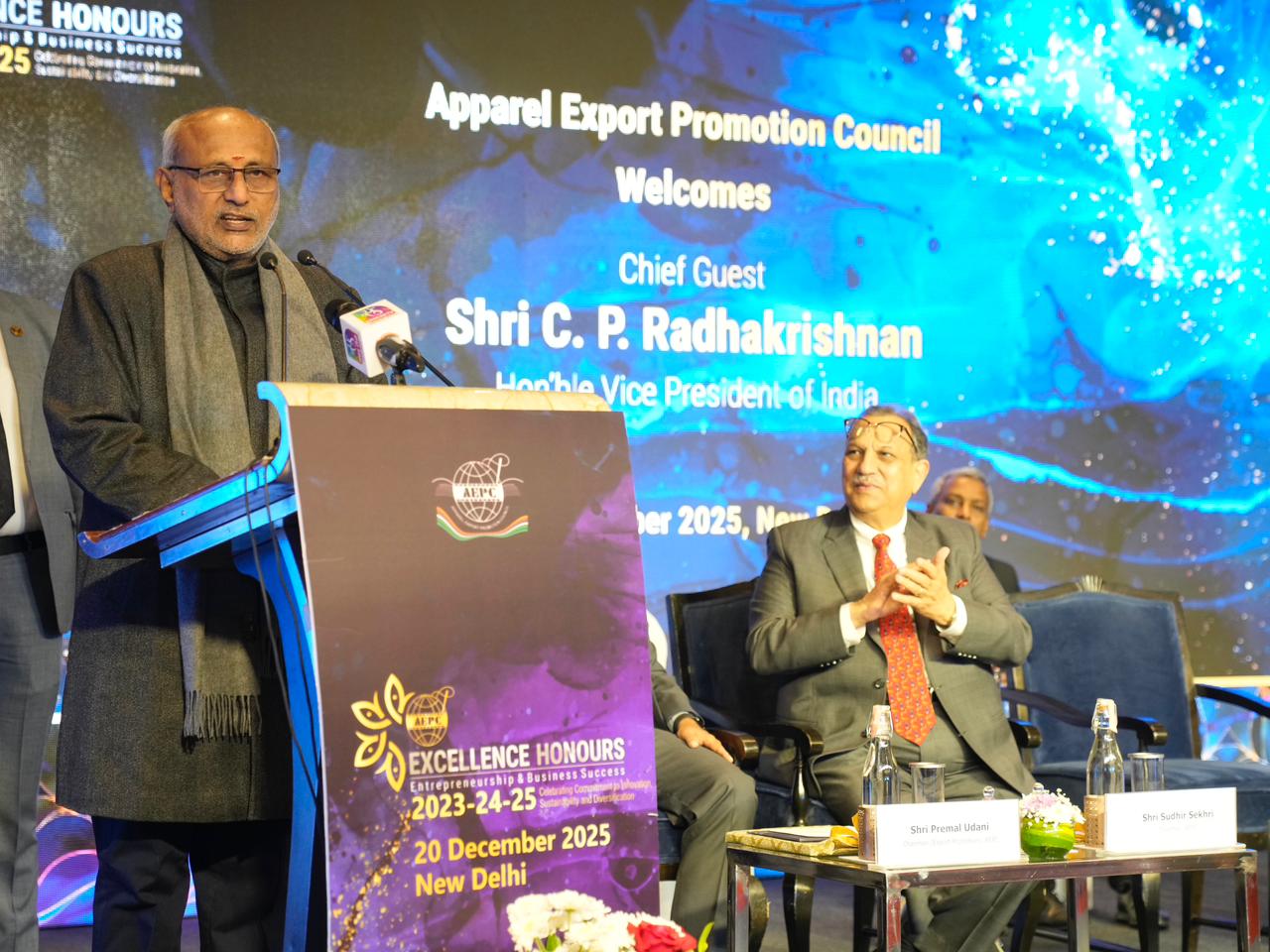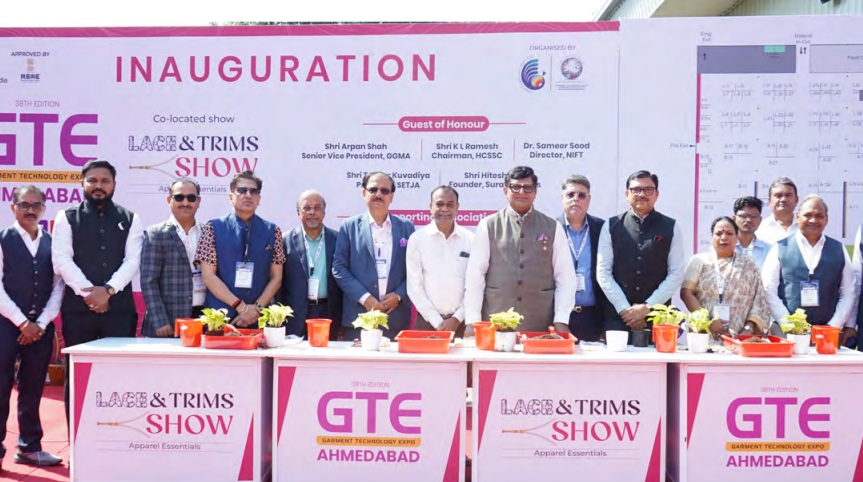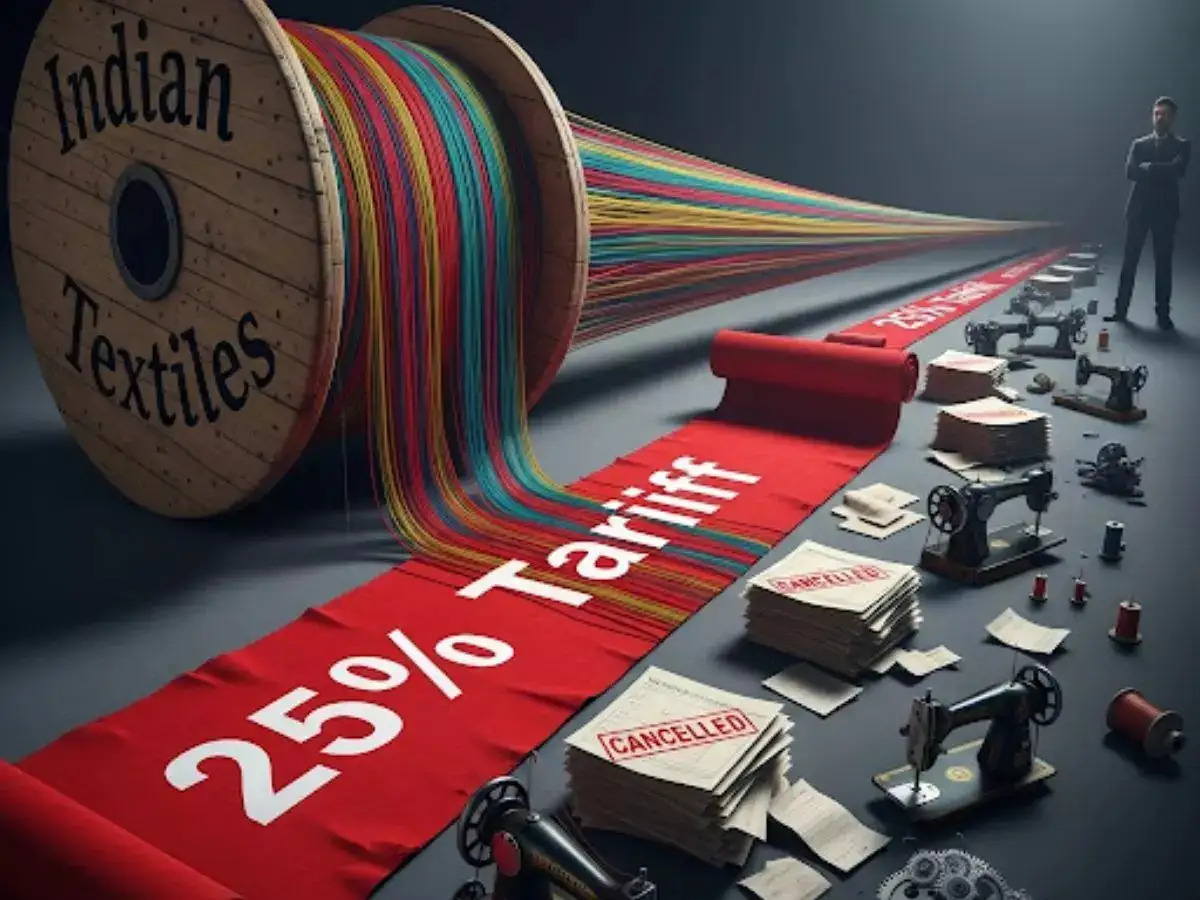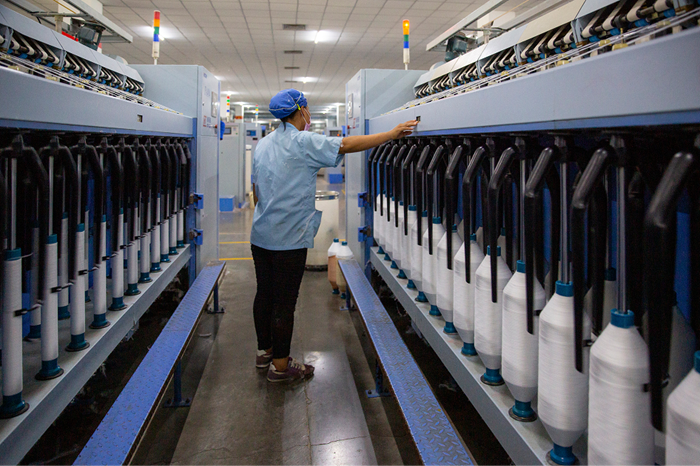FW
A major player in French menswear, Celio is revitalizing its brand, moving beyond its ‘normal’ universe with a comprehensive new store concept, first unveiled in summer 2024 and officially rolling out in 2025. This strategic shift includes the momentous debut of a mixed-gender offering, testing womenswear alongside its core men's line for the first time on a large scale.
The cornerstone of this evolution is the brand's new 1,200-sq-m flagship store opening on level -1 of the Forum des Halles shopping center in central Paris, placing Celio alongside premium brands like Lacoste and Sandro. This move is a significant step following a period of dynamic capsule collections—themed around manga, mountain wear (Chamonix-Mont-Blanc), and collaborations with influencers like Inoxtag and GMK—designed to surprise and attract new customers since the 2020 "Be Normal" campaign launch.
The new concept marks a distinct departure from the traditional red-and-white Celio aesthetic. It features large shopfronts, abundant lighting, open space, and the use of natural materials, moving towards an environment that is pared-back, elegant and structured. Developed with experts Laura Chavy (Ateliers AUAV) and Olivier Saguez (Saguez & Partners), the design utilizes omnipresent metal to neutralize the surroundings, allowing the quality, materials, and colors of the clothing to stand out, complemented by wood in service areas for warmth.
Sébastien Bismuth, CEO, Celio emphasizes, this 1,200-sq-m store doesn't just reprise the codes of our concept: it evolves them, adapts them and enriches them. The new store affirms the brand’s ambition to become a global player, capable of serving all customers, he highlights. women alike."
Previously tested in twenty ‘Bi-store’ locations under the ‘Be Camaïeu’ banner, this mixed-gender offer will gain significant exposure at the high-traffic Paris center. The overall strategy involves opening more spacious stores, like in Dijon, to showcase a deeper assortment. Importantly, Bismuth's team plans to leverage certain elements (metal fixtures, lighting, screens) to gradually align the existing network of 280 French stores without requiring a complete, costly overhaul.
With sales close to €600 million in 2023 and slight growth confirmed for 2024, Celio is backing this transformation with logistical expansion - its warehouse is adding over 12,000 sq m by early 2026.
One of the major attractions at this year’s Denim Premiere Vision Milan, held from November 26-27, 2025 was Xlance, the fiber engineered to allow fabrics to maintain their elasticity, comfort, and naturally soft hand feel even after the most intensive finishing processes, including industrial washing, laser finishing, ozone treatments, and thermal curing.
This robust resilience expands creative boundaries for designers, allowing them to push traditional treatment limits without sacrificing performance or the fabric's natural touch. The cross-linked polyolefin-based technology of Xlance positions itself as a reliable constant against an industry backdrop of fleeting trends.
Besides being an elastic fiber, Xlance also proves to be a durability guarantee - designed for denim that must endure, retaining its look, hand feel, and comfort wash after wash, year after year.
The collaboration with PureDenim showcased a denim specifically engineered to deliver consistent stretch performance over time. Luigi Caccia, Owner, confirmed that internal tests demonstrated Xlance fiber maintaining its elasticity even after intensive finishing. Furthermore, long-term evaluations confirmed remarkable performance stability after extended wear and multiple home-laundering cycles. The fabric preserved its initial elasticity and performance, proving that the technology delivers a denim that doesn't lose its identity or functionality under real-world stress.
Additionally, Xlance fabrics can be heat-set at low temperatures, which significantly contributes to a reduction in CO₂ emissions.
The garments featured at the Xlance booth were manufactured and washed by the Elleti Group of San Bonifacio (VR), a benchmark in premium denim processing. Elleti Group tested a diverse range of garments—from classic 5-pocket jeans to jackets and workwear—and confirmed that the fabrics with Xlance maintained consistent responsiveness and high stability, preserving their stretch and soft hand feel through high-intensity industrial treatments.
During the show, Xlance unveiled results from comparative testing with Tonello, an international leader in washing and finishing technologies. Tonello subjected two fabrics of identical weight and construction - one made with Xlance and the other with traditional Spandex - to aggressive wash cycles, high temperatures, and prolonged extreme treatments.
The Xlance sample exhibited superior stability and no loss of elasticity, confirming its ability to withstand demanding industrial processes while preserving comfort and performance.
Xlance is setting a new direction for the industry: a stretch denim designed for a future where ethics and durability are synonymous with style, translating to less waste, higher performance, and more creative freedom for designers.
Two exciting retailers are making a splash in Liverpool One this holiday season, bringing both local fashion and a viral global toy phenomenon to the city center.
Liverpool-born fashion brand Noughts & Kisses is making a brief, five-day return to the city center with an exclusive pop-up store at Liverpool One. Founded by Jemma Bradley in 2011, the company initially sold sunglasses but quickly expanded. It has since gained national recognition, with celebrity endorsements including Coleen Rooney. The brand is now known for its chic and stylish eveningwear, comfortable items, and co-ords.
Also opening this week in Liverpool One is the internationally renowned retailer Pop Mart. The toy shop will offer plenty of hot products, exclusive gifts, and so many surprises.
Founded by Wang Ning in 2010, Pop Mart has become one of the fastest-growing toy shops globally. Its recent resurgence is largely credited to the viral success of the Labubu fluffy toy, which has become a worldwide phenomenon. The unusual-looking toys have recently been spotted with numerous celebrities, including Rihanna, Dua Lipa, Kim Kardashian, and David Beckham.
Indicating a strategic move towards international expansion and providing an upgraded physical retail experience, Victoria’s secret opened its newest store in Pavilion KL, Kuala Lumpur
The opening of the new Victoria’s Secret (VS) store in Pavilion KL, Kuala Lumpur is the latest sign of VS&Co’s strategic move towards international expansion and an upgraded, physical retail experience, especially in fast-growing markets like Southeast Asia.
Boasting a high-concept façade with two entrances and luxurious details like a two-tier chandelier, the 2,500 sq ft store highlights the brand’s shift from its historically provocative image to one focused on accessible luxury and sophisticated inclusivity.
This investment by VS & Co in brick-and-mortar stores is a critical part of the company's ‘Path to Potential’ strategy, designed to strengthen the core, ignite growth. While the brand reported a 1 per cent increase in full-year net sales during fiscal 2024 to $6.230 billion, with international sales growing by 11 per cent, physical retail remains central to its operation. The design of the Pavilion KL demonstrates the brand’s commitment to operational excellence and provides a modern shopping experience
The brand’s renewed focus on a more welcoming store design directly addresses past brand issues. VS is actively refreshing its identity by promoting diversity and broadening its product categories, including more athleisure and size-inclusive options, to connect with Gen Z consumers who value authenticity. This is supported by digital efforts, such as its strategic collaboration with Google Cloud for an AI-powered conversational assistant to improve the online customer experience.
However, the real challenge for this global growth plan - which projects FY 2025 net sales between $6.2 billion and $6.3 billion - will be the brand’s ability to turn a beautiful store aesthetic into sustained cultural relevance and market share gains against direct-to-consumer competitors that champion body positivity.
Gymshark opened its first US flagship store on December 13 at 11 Bond Street, NYC, signaling a major step up in the online-first brand's strategy to integrate physical retail into its business model. This huge investment in a prime New York spot - a three-story, 13,000 sq ft experiential space—is designed to transition the company from a digitally native startup to a genuine omnichannel apparel powerhouse. This strategic move aims to deepen its relationship with the profitable North American market, which has been a primary driver of its estimated £500+ million valuation.
Central to the flagship's design is its focus on community engagement, a key feature that sets the brand apart. The store features an entire floor dedicated to meet-and-greets, live podcasts, and fitness talks, along with unique elements like bespoke bodegas and 3D-printed mannequins modeled after community members.
This emphasis on experiential retail is crucial for building loyalty in the fiercely competitive athleisure market, where brands like Lululemon and Nike dominate the physical space. Gymshark is looking to convert its massive social media following into high-value, in-person sales.
While the Bond Street flagship strengthens its physical presence, founded in 2012 by Ben Francis, the company faces the challenge of maintaining its fast growth trajectory while managing the higher operating costs and complex logistics of a global retail network. The brand's commitment to this large-scale physical expansion, highlighted by the December 13th opening, shows its confidence in capturing a larger piece of the US market. It's using the store as a model for future international rollouts and proving its capability as a full-spectrum fashion and fitness brand.
Scoop will return to Olympia National from February 8–10, 2026, promising an exceptional showcase of leading Danish designers that reinforces its standing as the UK’s most curated and forward-thinking fashion trade show. Recognized for its premium edit, gallery-like setting, and global perspective, Scoop continues to offer buyers unparalleled access to international talent. This season, the focus is squarely on Denmark, a country celebrated globally for its clean aesthetics, thoughtful craftsmanship, and effortlessly modern approach to style.
This edition of Scoop will feature a hand-selected collective of top Danish names, illustrating the breadth and modernity that defines the country's design landscape. The Danish offering includes beautifully refined womenswear, considered lifestyle collections, and contemporary accessories, representing some of the most commercially compelling and internationally admired talent available today.
True to Scoop’s reputation as a meticulously curated platform, Karen Radley, Founder and Curator’s edit prioritizes collections that introduce something fresh to the UK market. She seeks brands with strong identities, responsible production values, and pieces that resonate with the modern consumer.
The Scandinavian lineup is compelling, featuring highly sought-after names such as Enamel Copenhagen, Gustav, Part Two, Mos Mosh, Nuni Copenhagen, InWear, Soya Concept, Woden, St. Tropez, Soaked in Luxury, and mbyM. Together, they represent a vibrant spectrum of Danish fashion, spanning everything from wardrobe essentials and feminine tailoring to modern lifestyle items.
Karen Radley states, Danish design has an extraordinary ability to balance ease, beauty, and purpose. It’s modern, commercial, and incredibly relevant to how we live and dress today in the UK. Scoop remains the essential buying destination for fashion retailers seeking truly exceptional design and discovery in an intimate, inspirational environment.
Brazilian cotton prices have declined to a 16-year low due to a combination of factors, primarily centering on abundant supply and weak demand, both domestically and globally.
In real terms, the CEPEA/ESALQ Index for cotton (payment in 8 days) fell to its lowest level since September 2009 in November 2025, after six consecutive months of decline. The average price in November 2025 settled around BRL 3.4505 per pound (approximately $0.65). This price was about 12.5 per cent lower than the price in November 2024
A major global cotton producer and the world's leading exporter, Brazil has seen high production. This strong supply has flooded the domestic market, putting intense downward pressure on prices. By late November 2025, over 81 per cent of Brazil's 2024-25 crop had been processed. Local textile industries and domestic buyers are purchasing minimal volumes, operating at diminished capacity, and are cautious about new transactions.
Global cotton prices have also softened, and the CEPEA/ESALQ Index has remained below the export parity price, signaling little support from external markets. Producers facing cash pressure or needing to clear inventories have shown greater flexibility in accepting lower prices, which further adds to the downward momentum.
Activity in the spot market remains restricted, with most market participants focused on fulfilling existing long-term contracts. However, traders are already negotiating new deals for early 2026 and for the cotton from the next season. Low prices are tightening profit margins for Brazilian growers, making it difficult for many to break even, especially those with lower-than-expected yields.
In short, the strong harvest has created a surplus that the current weak global and domestic textile demand cannot absorb, leading to a sustained and sharp fall in prices.
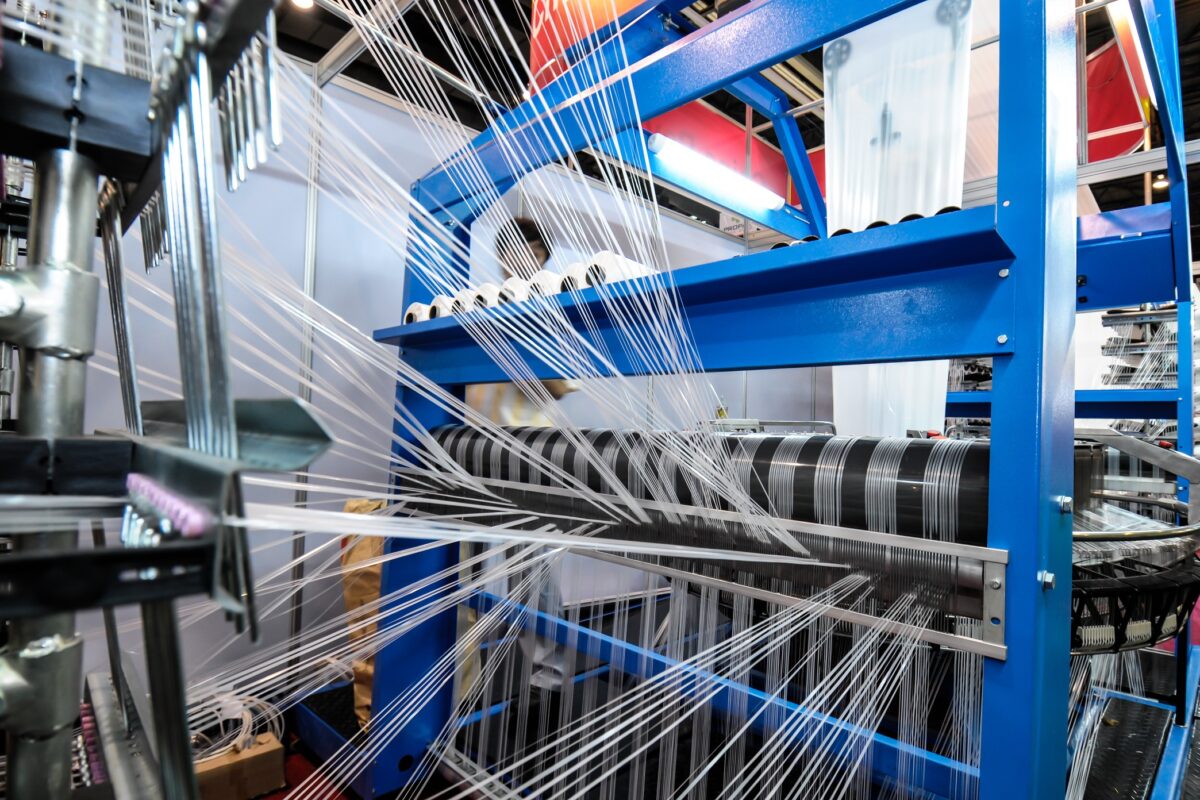
India generates nearly eight million tonnes of textile waste every year, placing the country at the center of the global circular economy though it is rarely acknowledged as such. While much global attention centers on futuristic recycled fibers and chemical breakthroughs, a decades-old, quietly efficient revolution has shaped the southern textile belt. In Tirupur, the cradle of India’s knitwear industry, hundreds of mechanical recycling hubs have grown into one of the world’s most important textile revival systems, converting mountains of discarded fabric into millions of tonnes of usable fiber.
Visitors who walk through these facilities often leave stunned. What they discover is a paradoxical ecosystem: advanced machines that rely on intensely human labor, immense material streams that depend on purity, and a globally competitive recycling economy held together by improvisation, ingenuity, and sheer scale.
The mechanical backbone of the circular economy
At the heart of this industrial engine lies mechanical recycling, a system that relies on high-power shredders, openers, and carding machines to tear textile waste back into usable fiber. The process is deceptively simple but technologically demanding. Facilities across Tirupur run a mix of machines whose capabilities directly determine the strength, length, and usability of the recycled fiber they produce.
Standard units typically operate upgraded Chinese lines, robust workhorses that efficiently process cotton-rich clippings while maintaining acceptable fiber length. Premium operators, by contrast, have invested in advanced Turkish or Austrian machinery capable of preserving greater fiber length. The difference in output quality between these two systems is real but often narrower than assumed. Decades of local innovation, tweaks, retrofits, custom drums, and optimized blade settings, have pushed Indian machines to global levels of performance.
Yet even the most advanced machines cannot escape the fundamental laws of recycled fiber. The shorter the fiber becomes, the more reinforcement it needs. For most garment-grade applications, recyclers must blend their output with up to 40 per cent recycled polyester to ensure adequate yarn strength. But some of Tirupur’s most exacting recyclers have developed a surprising specialty: ultra-pure input streams, sometimes achieving contamination rates as low as one per cent. Such purity is not a machine-made miracle but the result of something far more human.
Why India imports clean waste
Contrary to global narratives about circularity, India’s mechanical recycling sector does not rely on discarded consumer garments. Instead, its engine runs on pre-consumer waste, cutting-floor clippings from knitwear factories. These clippings, generated in large volumes within Tirupur itself, offer the ideal characteristics for mechanical fiber recovery: cleanliness, fiber uniformity, and predictable composition. The table reflects the structure of India’s textile waste stream, illustrating both the abundance and the hierarchy of what actually gets recycled.
Table: Waste stream and utilization in India’s textile recycling sector
|
Waste stream category |
Estimated annual volume (kilo tonnes) |
Primary use in recycling |
Challenges |
|
Pre-Consumer Waste (Clippings) |
3,265 |
Preferred Feedstock |
Cleaner input, higher-quality output. |
|
Post-Consumer Domestic Waste (PCW) |
3,944 |
Low Utilization/Downcycling |
Inadequate sorting prevents value recovery. |
|
Imported Waste |
584 |
Supplement Clean Feedstock |
Sourced from places like Bangladesh, Mexico, US, and EU to maintain consistent quality supply. |
|
Total Waste Managed Annually in India |
7,793 |
India is a Global Recycling Hub |
Source: Fashion for Good / IDH (2020s Estimates) |
This data reveals the irony at the core of India’s recycling landscape. Despite nearly four million tonnes of domestic post-consumer waste, very little of it enters high-value recycling streams. Instead, recyclers import waste often from as far as Mexico not because India lacks material, but because domestic post-consumer waste is too mixed, too stained, or too poorly sorted for efficient processing. The import of clean clippings, particularly cotton-rich ones, acts as a stabilizer for the mechanical mills. Without it, the machines would run slower, produce shorter fibers, or require heavier polyester blending each of which erodes profitability.
Where machines depend on humans
Behind every bale of recycled fiber lies the most labor-intensive and low-tech step of the process: sorting. Before textile waste can enter the shredders, skilled workers separate it by color, material, and contamination level. This is no small task. A single mis-sorted polyester piece can contaminate an entire batch of cotton, lowering quality and value.
The manual sorting floors of Tirupur are immense. Rows of workers many of them women sit before mountains of textile scraps, moving at a speed and precision no machine has yet replicated. It is here, in these labor hubs, that India’s recycling sector shows its true scale as an employer. Across India, an estimated four million people work in the broader textile waste ecosystem, and sorting is its largest job creator.
The cost structure reflects this reality. Sorting and waste procurement together comprise more than 60 per cent of a recycler’s daily operating cost. Machines may define the final product, but humans define both the quality and the economics.
The pressure valve for a waste-heavy ecosystem
Not all textile waste is created equal. Materials with high contamination, blended fibers, elastane-heavy jerseys, or low-grade imports cannot be remade into high-quality yarns. For these streams, downcycling acts as a crucial release valve. Waste unsuitable for spinning is shredded further and transformed into non-woven textiles used in insulation, automotive interiors, mattress fillings, filtration media, or industrial wipes. This downcycling layer prevents hundreds of thousands of tonnes of material from entering landfills. It also provides steady revenue for recyclers, creating a diversified ecosystem that absorbs different grades of waste without collapsing under inconsistent input quality.
The Next Leap: Automation, AI, and the future of recycling
The next frontier for Tirupur lies in solving the bottleneck that has limited the sector’s growth for decades: sorting. Recognizing the lost value in poorly sorted post-consumer waste, several Southern Indian recycling groups have begun experimenting with technologies that could fundamentally reshape the ecosystem.
AI-powered optical scanners, near-infrared (NIR) sorting systems, and semi-automated conveyor-based classification lines are now being tested in pilot plants. Their potential is transformative. Machines that can recognize fiber composition and color with precision could unlock India’s vast domestic post-consumer waste supply, redirecting it from landfills into high-value recycling streams. Early financial models indicate that sorting hubs adopting automated classification stand to increase revenue by nearly 10 per cent, thanks to the higher value of clean, categorized waste.
A circular engine at the crossroads
South India’s textile recycling cluster is among the world’s largest, most advanced, and most understated circular economies. It is a system built on contradictions: high-tech machines paired with manual sorting, local waste supplemented with imported clippings, and global environmental goals met through human-powered precision.
As automation, AI-assisted traceability, and domestic post-consumer waste systems mature, Tirupur is poised to evolve from a mechanical recycling powerhouse into a fully integrated circular economy hub. What emerges next will not just influence India’s textile sector but could redefine how the world understands and implements industrial-scale recycling. The hidden mills of Tirupur are no longer just recycling fabric. They are reimagining the future of waste, work, and the circular economy itself.
Marking a strategic commitment by its parent company, Jack and Jones recently opened its first two standalone stores in the UAE. The stores were opened at Al Wahda Mall, Abu Dhabi, and City Centre Al Zahia, Sharjah. This move prioritizes direct-to-consumer (B2C) growth in the Middle East.
Historically, the brand has operated through wholesale distribution and local partnerships. This strategic shift to dedicated physical stores is designed to capture a larger portion of the UAE's highly competitive and affluent apparel market, which serves as a regional retail gateway to the Gulf Cooperation Council (GCC) bloc.
Founded in 1990 and recognized globally for its denim and casual menswear, Jack & Jones is leveraging these new UAE stores as crucial vehicles for delivering the full, immersive brand experience. Establishing this B2C footprint is vital for boosting brand awareness and complementing its existing market presence.
Entering the UAE, one of the world’s most dynamic fashion markets, involves substantial operational challenges, including intense competition and the necessity of creating localized product assortments to satisfy diverse consumer tastes.
However, this expansion is supported by Bestseller’s strong fiscal performance, which provides the necessary capital for this aggressive growth. The success of the Abu Dhabi and Sharjah outlets will be critical. They will function as a case study for the future rollout of more stores across the Gulf, proving the company’s capabilities as a true retailer in a highly demanding global environment.
On September 15, 2025, the European Commission initiated an Anti-dumping (AD) investigation (case AD738) concerning imports of PET spunbond from China, acting upon a complaint filed by the relevant European Union industry.
This proceeding reached a significant milestone on December 2, 2025, when the Commission subjected these imports to registration. Effective December 3, 2025, this move mandates that all users must register their imports with customs authorities, who will now meticulously monitor the import flows.
Making these imports subject to registration is critical because it empowers the Commission to impose definitive anti-dumping duties with retroactive effect. The EU industry has publicly welcomed this step and expressed gratitude to the European Commission for its efforts to re-establish fair competition (a level playing field) in the EU market.

